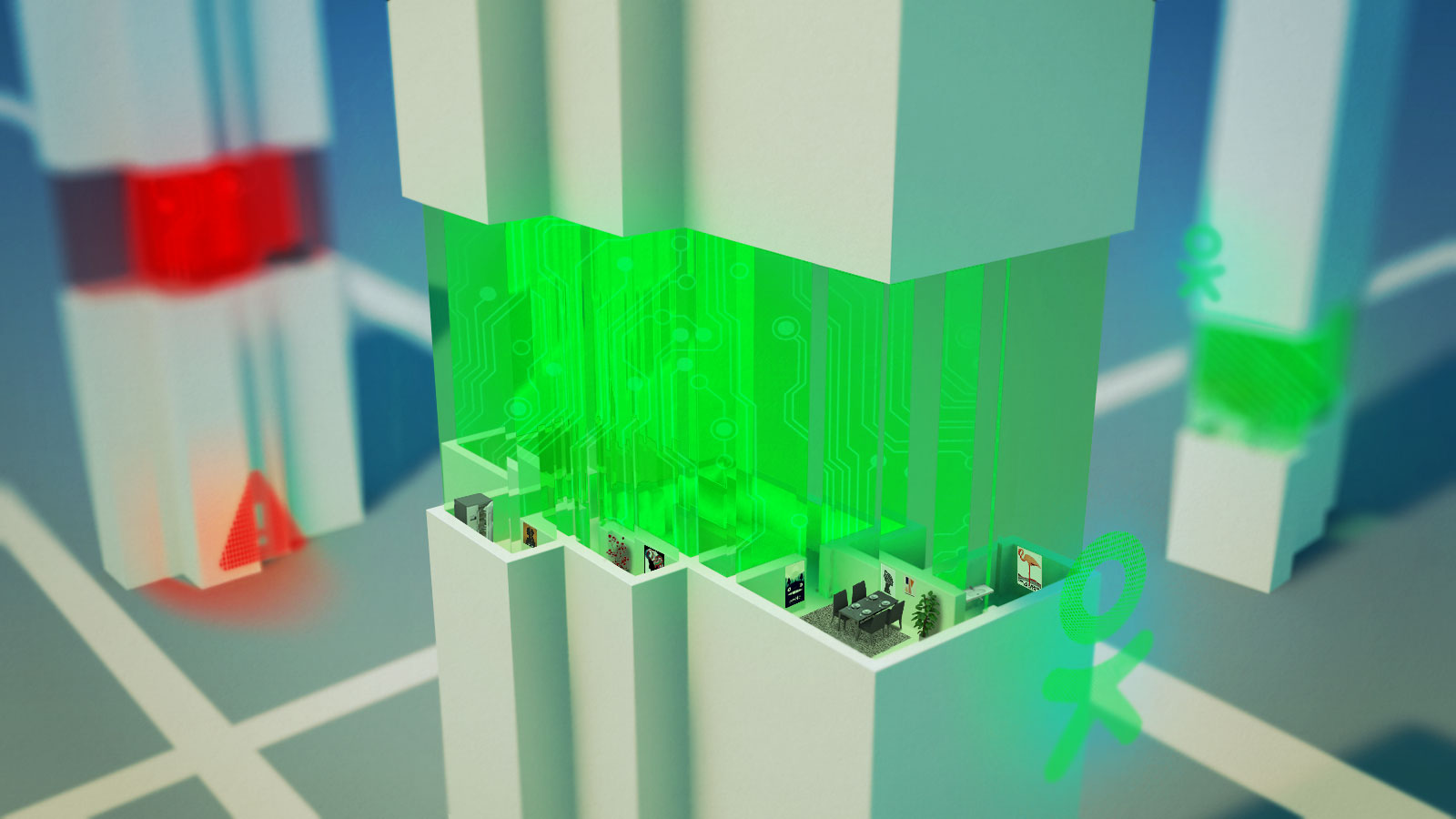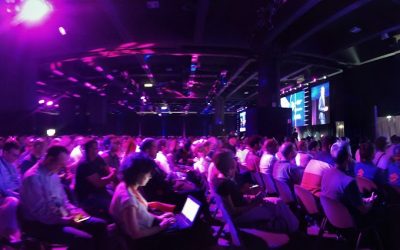Smart technologies use is now bringing (and will bring even more in the future) significant benefits, both from an economic and environmental perspective, reducing CO2 impact. Intelligent technologies are widespread and smart cars and other tools will drastically change the digital landscape.
Will 2019 then be the year when buildings become officially “smart”?
Right now, most buildings cannot comply with the energy saving standards required by the EU.
In the last few years, a number of different easily accessible and technologically “intelligent” strategies have been available on the market.
Such technologies are spreading more and more rapidly due to their being very reliable, useful and affordable compared to just a couple of years ago. They allow buildings to be very performant from an energetic perspective.
Until some time ago, understanding and improving the energy performance of a building was something pretty complicated. Now, just by using IoT – Internet of Things – operational info can be simply obtained. These information are easy to be read and they provide an immediate estimate, so they can be used at once to start improving profits.
Smart building means giving each building tools and technologies that can help facilitating the usage of buildings by people.
Making a building intelligent means using automatization and integration of digital technologies and building automation. This highly simplifies efficiency and rationalization of consumption on a large scale.
But which ones are the trends of 2019?
Here are the 5 most relevant ones:
- Real-time Energy Monitoring
- Automated Demand-Response
- Demand Control Ventilation
- Smart Lighting
- Energy-as-a-Service
1. Real-time Energy Monitoring
Real-time monitoring is a fast growing technology which offers users and managers visibility on when (where and how too) energy is consumed. It gives an easy way to understand where to reduce waste and improve energy efficiency.
A Real-time Energy Monitoring tool is a unit which registers the energy consumption in real time and it shares info on how energy is used. It can be used for lighting, air conditioning, etc. Many of the tools available are smart and they can send alerts when something is not working in the way it should, generating statistics about it.
Why should we monitor energy in real time and what are the benefits?
As previously mentioned, we can identify the areas where more energy is wasted, being then able to reduce energy costs through prompt identification of faults and inefficiencies. The sensors are connected to operative machines such as engines, pumps and fans and they can measure vibrations and energy use, temperature, humidity and much more. All this happens even after working hours and they have an immediate reaction to the issues.
Such tools allow you to be proactive on repairing (also known as predictive maintenance), reducing times and having less expensive repairs. They also give a great amount of data regarding control, conformity and warning about possible anomalies.
Real-time Monitoring gives you the option of managing your energy in an intelligent, efficient and reliable way as, when it is about energy, you cannot control what you don’t understand.
2. Automated Demand Response
Demand-Response (DR) is an articulated programme of actions which can be implemented by the end user (industrial, commercial or residential). It has been created and implemented to solve emergencies and give a solution for managing energy rush hour.
Until some years ago “Demand-Response” was simply a way to reduce energy use inside a building during price peaks. Now, whilst foreseeing the cost of the electricity tariff in a specific time, the building can be warmed/cooled before the cost reaches its peak.
Since electric networks are evolving, Demand-Response services have become a fundamental tool to manage energetic systems, which have also evolved rapidly. Putting together Real-time Energy Monitoring and its advanced analysis, Demand-Response becomes more effective.
IoT energetic, mechanical and environmental sensors measure the quantity of consumed energy and they combine data with environmental info (such as meteorological conditions) to take strategic decisions on the use of certain devices outside times when the energy cost is higher. The cost of electric energy used during peak time periods translates into a hefty part of the energy bill.
According to some estimates, by reducing the demand for energy by just 5%, the whole bill could see a substantial decrease by 40%.
Demand-Response will play a key role in integrating renewable energies in the electric coverage during peak time request, reducing buildings energy costs and their carbon footprint at the same time.
3. Demand Control Ventilation
Demand Control Ventilation is based on giving residents the right amount of cool air when they need it and if needed.
Generally speaking, air treatment units in a commercial building bring in external air (ventilation) to maintain an adequate quality of air for employees. That air needs to be “conditioned” – heated or cooled. The quantity of air introduced is based on several calculations which consider occupancy and square footage of the building.
Demand Control Ventilation uses air quality sensors to monitor the temperature of the building, Volatile Organic Compounds (VOC) and CO2 levels. It regulates how much air to bring in according to the indoor air quality (IAQ) data, provided by the sensors.
A non-smart building will bring in the same amount of external air, regardless of human occupancy and internal activity.
In every single moment, Demand Control Ventilation offers optimization of heating consumption and of internal air quality. It is all automatic and it offers several advantages on the way the ventilation system works.
Being able to regulate the introduction of air according to real readings of CO2 percentage in the whole building, is a massive sanitary advantage and it reduces the quantity of energy that the building uses.
4. Smart Lighting
“Smart lighting” has been in the center of attention for many years but it hasn’t really taken off as of yet. This impasse could now be unblocked due to the big diffusion of affordable led lights, to several examples made public of who is using this technology and on the big amount of saved energy.
Smart Lighting is an area which registered a lot of development and it potentially is a big stimulus for the whole IoT sector since it allows intelligent objects in a confined space to share info through specific apps.
Sensors connected lights can register occupancy, level of activity, temperature, humidity and other factors and subsequently send all these data to a system which will analyze them.
In this specific moment, the use of smart lighting is mainly to turn off lights automatically when no one is in a room.
In the long term facility managers will have a quantity of data available regarding the use of buildings that will allow them to carefully plan whilst substantially reducing the environmental impact.
5. Energy-as-a-Service
Each building is unique in the way it consumes energy and it is also quite obvious to state that the owners should have more energy control.
Energy-as-a-Service (EaaS) helps facility managers in giving them the option of determining in which way energy is released and stored. There are also options of “distributed generation” and “smart grid”, which allow energy to be produced locally using small scale technologies (like solar panels).
Most contracts include an energy saving warranty, which eliminates the risk of implementing saving measures individually. EaaS is rapidly emerging and it will be more and more interesting to a growing number of facility managers in the coming years.
Conclusions
The implementation of these and other intelligent solutions is not as difficult and complex as it might seem. Of course, there needs to be a lot of attention regarding security since, any single tool connected to the internet, is exposed to potential threats.
There are a number of IoT solutions on the market, specifically planned to make building more performing and efficient. The biggest issue is to follow a controlled and integrated management approach, easily applied to newer buildings but more complicated on older ones which require more flexibility to be integrated.
The fundamental thing for the near future is that we can have control over the energy performance of the building, reducing consumption and releasing less CO2.
You might also like:
Smart office: when your office is informal and costumized
Smart office: communication technologies and a real example
Smart meter: user centered multi-utility platforms and EMS



